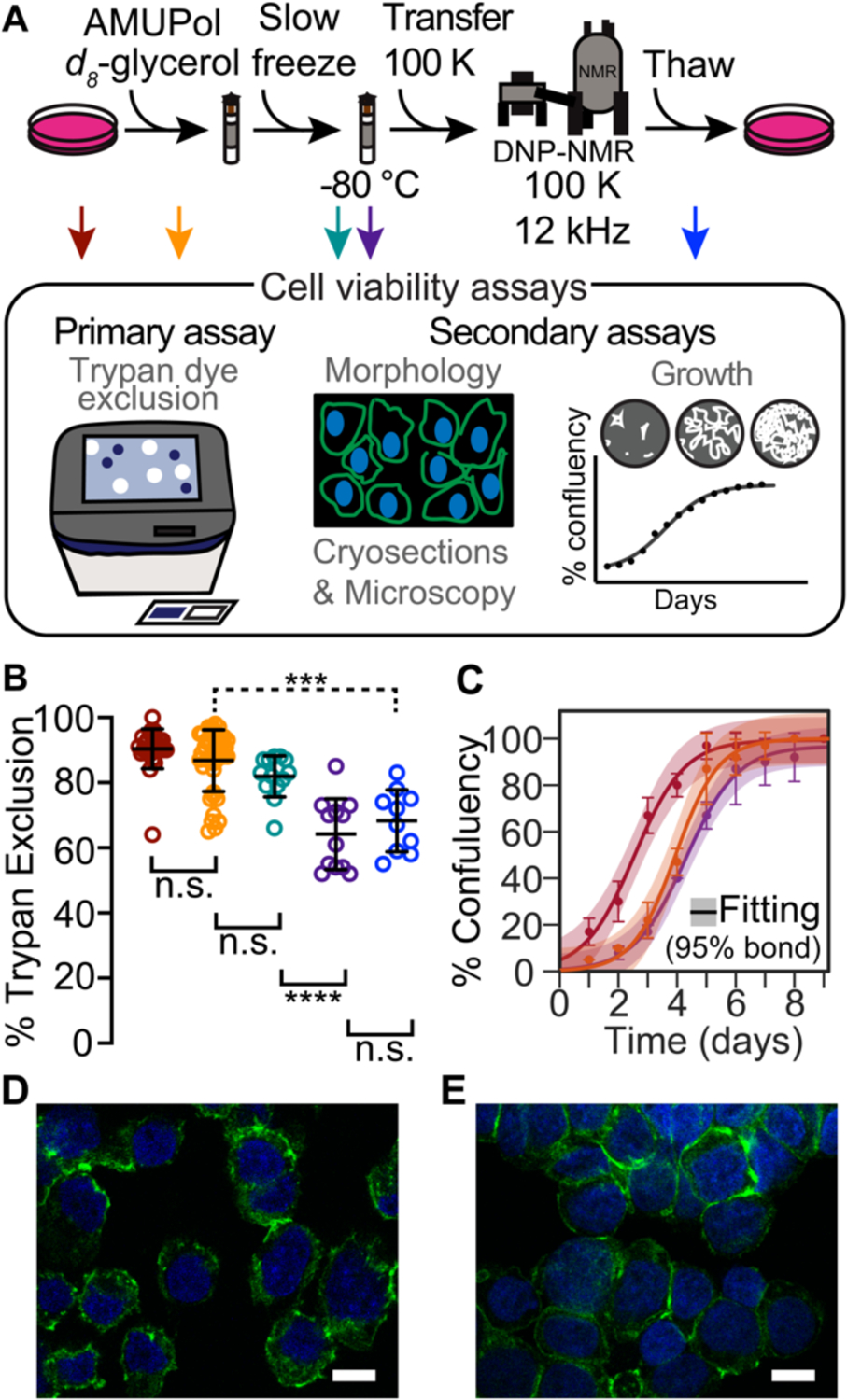Figure 1:

HEK293 cells are viable throughout the DNP NMR process. (A). Experimental scheme of the DNP NMR sample preparation procedure and cell viability assays. Colored arrows indicate points at which sample viability was assessed. Viability was assessed for cells after trypsinization and washing (dark red), after suspension in AMUPol and cryoprotectants (orange), after being frozen at 1 °C per min (green), after manipulation to remove the drive tip from the frozen rotor (purple) and after the entire DNP MAS NMR experiment (blue). (B) Frozen cells best represent the state of the sample during DNP NMR data collection. Percentage of cells with trypan impermeable membranes at each sample assessment point, colored as in A. Each point represents an independent sample. Black bars indicate average and standard deviation. Brackets indicate results of two-tailed homoscedastic student’s t-tests. Unpaired comparisons are indicated with solid brackets and paired comparisons with dashed brackets. (n.s. p > 0.05, * p < 0.05, *** p < 0.001, **** p < 0.0001). (C) Addition of glycerol affects growth kinetics, but further sample manipulations do not. Growth kinetics as assessed by confluency, colored as in A. The averages and standard deviations of three independent experiments are indicated by circles and error bars, respectively. The best fit of sigmoid is indicated in solid lines and the 95% confidence interval by the shaded area. (D and E) Fluorescence microscopy of HEK293 cells immediately before (D) and immediately after freezing (E) using Phalloidin (green) and Hoechst 33342 (blue) to stain actin cytoskeleton and nucleus (Scale bar 10 μm).
